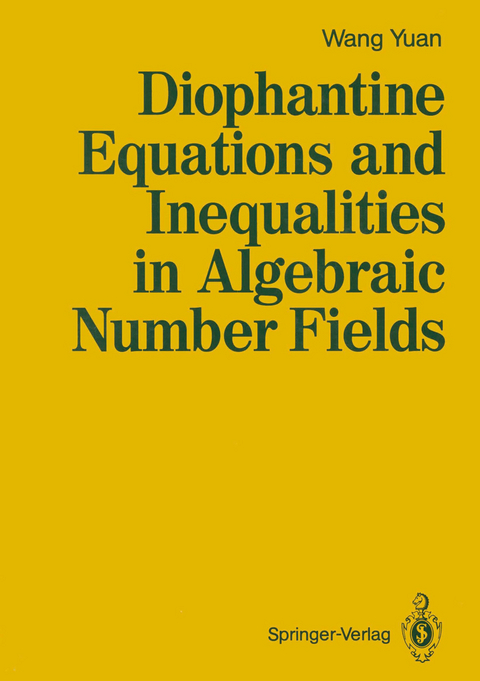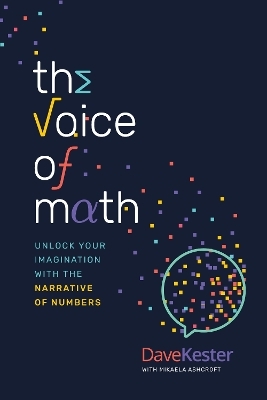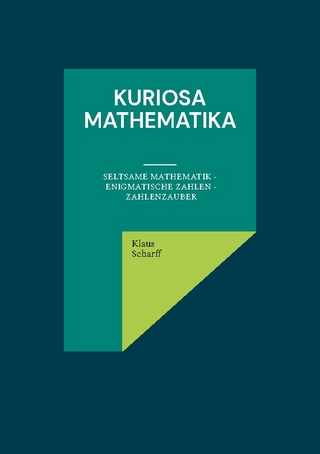
Diophantine Equations and Inequalities in Algebraic Number Fields
Springer Berlin (Verlag)
978-3-642-63489-5 (ISBN)
1. The Circle Method and Waring's Problem.- 1.1 Introduction.- 1.2 Farey Division.- 1.3 Auxiliary Lemmas.- 1.4 Major Arcs.- 1.5 Singular Integral.- 1.6 Singular Series.- 1.7 Proof of Lemma 1.12.- 1.8 Proof of Theorem 1.1.- Notes.- 2. Complete Exponential Sums.- 2.1 Introduction.- 2.2 Several Lemmas.- 2.3 Mordell's Lemma.- 2.4 Fundamental Lemma.- 2.5 Proof of Theorem 2.1.- 2.6 Proof of Theorem 2.2.- Notes.- 3. Weyl's Sums.- 3.1 Introduction.- 3.2 Proof of Theorem 3.1.- 3.3 A Lemma on Units.- 3.4 The Asymptotic Formula for N(a,T).- 3.5 A Sum.- 3.6 Mitsui's Lemma.- 3.7 Proof of Theorem 3.3.- 3.8 Proof of Lemma 3.6.- 3.9 Continuation.- Notes.- 4. Mean Value Theorems.- 4.1 Introduction.- 4.2 Proof of Theorem 4.1.- 4.3 Proof of Theorem 4.2.- 4.4 A Lemma on the Set D.- 4.5 A Lemma on the Set D(x).- 4.6 Fundamental Lemma.- 4.7 Proof of Lemma 4.1.- Notes.- 5. The Circle Method in Algebraic Number Fields.- 5.1 Introduction.- 5.2 Lemmas.- 5.3 Asympotic Expansion forSi (?, T).- 5.4 Further Estimates on Basic Domains.- 5.5 Proof of Theorem 5.1.- 5.6 Proof of Theorem 5.2.- Notes.- 6. Singular Series and Singular Integrals.- 6.1 Introduction.- 6.2 Product Form for Singular Series.- 6.3 Singular Series and Congruences.- 6.4 p-adic Valuations.- 6.5 k-th Power Residues.- 6.6 Proof of Theorem 6.1.- 6.7 Monotonic Functions.- 6.8 Proof of Theorem 6.2.- Notes.- 7. Waring's Problem.- 7.1 Introduction.- 7.2 The Ring Jk.- 7.3 Proofs of Theorems 7.1 and 7.2.- 7.4 Proof of Theorem 7.3.- 7.5 Proof of Theorem 7.4.- Notes.- 8. Additive Equations.- 8.1 Introduction.- 8.2 Reductions.- 8.3 Contraction.- 8.4 Derived Variables.- 8.5 Proof of Theorem 8.1.- 8.6 Proof of Theorem 8.2.- 8.7 Bounds for Solutions.- Notes.- 9. Small Nonnegative Solutions of Additive Equations.- 9.1 Introduction.- 9.2Hurwitz's Lemma.- 9.3 Reductions.- 9.4 Continuation.- 9.5 Farey Division.- 9.6 Supplementary Domain.- 9.7 Basic Domains.- 9.8 Proof of Theorem 9.1.- Notes.- 10. Small Solutions of Additive Equations.- 10.1 Introduction.- 10.2 Reductions.- 10.3 Continuation.- 10.4 Farey Division.- 10.5 Supplementary Domain.- 10.6 Basic Domains.- 10.7 Proof of Theorem 10.1.- Notes.- 11. Diophantine Inequalities for Forms.- 11.1 Introduction.- 11.2 A Single Additive Form.- 11.3 A Variant Circle Method.- 11.4 Continuation.- 11.5 Proof of Lemma 11.1.- 11.6 Linear Forms.- 11.7 A Single Form.- 11.8 Proof of Theorem 11.1.- Notes.- References I.- References II.
| Erscheint lt. Verlag | 18.10.2012 |
|---|---|
| Zusatzinfo | XVI, 170 p. |
| Verlagsort | Berlin |
| Sprache | englisch |
| Maße | 170 x 242 mm |
| Gewicht | 341 g |
| Themenwelt | Mathematik / Informatik ► Mathematik ► Arithmetik / Zahlentheorie |
| Mathematik / Informatik ► Mathematik ► Wahrscheinlichkeit / Kombinatorik | |
| Schlagworte | Additive Gleichung • algebraic number field • Circle method • Diophantine equation • Diophantische Gleichung • Kreismethode • Number Theory • Waringsches Problem • Waring`s problem • Waring's Problem |
| ISBN-10 | 3-642-63489-3 / 3642634893 |
| ISBN-13 | 978-3-642-63489-5 / 9783642634895 |
| Zustand | Neuware |
| Haben Sie eine Frage zum Produkt? |
aus dem Bereich


